Mario García Torres
Nada me han enseñado los años
12 JUL until 23 AUG 2025
Opening – 11 JUL 2025, 6-9 pm
At Linienstrasse 155, 10115 Berlin
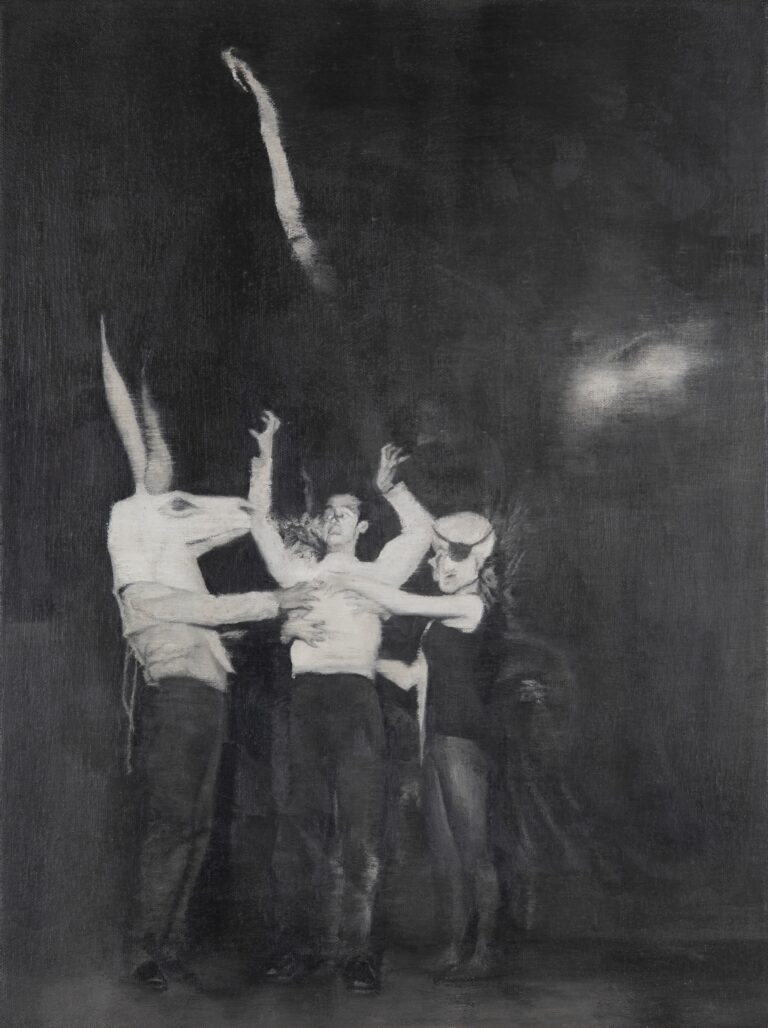
Mario García Torres,
A Strange Moment Painted After a Photograph of What I Believe to Be a Rehearsal for a Theater Piece by Leonora Carrington, n.d.
© Mario García Torres.
Courtesy the artist and neugerriemschneider, Berlin.
Photo: Omar Bocanegra, Mexico City
oil and wax on canvas
50 x 37.5 cm
In Mario García Torres’ fifth solo exhibition with neugerriemschneider, Nada me han enseñado los años (“All These Years Have Taught Me Nothing”), time, remembrance and theatrical tactics enmesh in a consideration of narrative construction, and an inquiry into the often obscured notion of truth, both in imagery and in reality. Often concerned with the global legacy of conceptual art, closely inspecting the art-historical record, García Torres here turns his conceptually laden investigative approach toward his native Mexico, presenting an essayistic ensemble of motifs, long-present in his memory, to trace a speculative chronicle of the country’s past century. The new black-and-white oil paintings – the artist’s first forays into figuration – are assembled to a storyboard that posits itself as archival testimony, yet possesses a sheen that threatens to betray it. Tension between the canvases rises as intent, action and retelling entangle, selectively echoing one another to fuel dialogs on the conditions of painting and the ever-developing role of the symbolic.
The past, for García Torres, is a seemingly infinite store of potentialities, its events mere suggestions guiding a slate of independent readings. That which is touted as conclusive becomes, in his practice, a beginning – a point of origin for histories to be examined, expanded, redeveloped, unlearned and learned anew. Moments in time are made to spaces for fabrication and fact to share with ease. These ostensible opposites, placed on equal footing, enter exchange across a porous divide, dissolving into one another as paradoxes are brought to fruition. The imagined and the actual merge to experimental, lyrical wanderings through mutable time in – perception and recall, replete with their inconsistencies and circuitous reliances, are put to the test, forged as tools for dissecting the concepts of mythmaking.
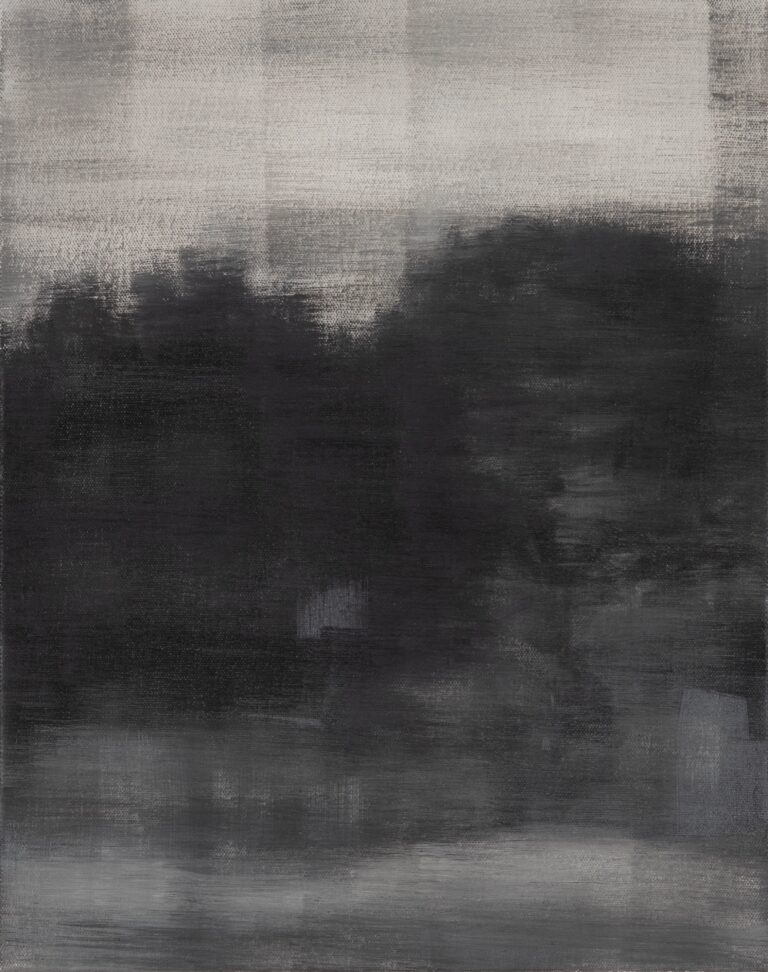
Mario García Torres,
A Ranch Where a Police Raid, Which Turned Out to Have Been Orchestrated by Mexico’s Top Police Official at the Time, Was Staged and Televised Live One Morning in the Mid-2000s (Las Chinitas), n.d.
© Mario García Torres.
Courtesy the artist and neugerriemschneider, Berlin.
Photo: Omar Bocanegra, Mexico City
oil and wax on canvas
45 x 35.5 cm
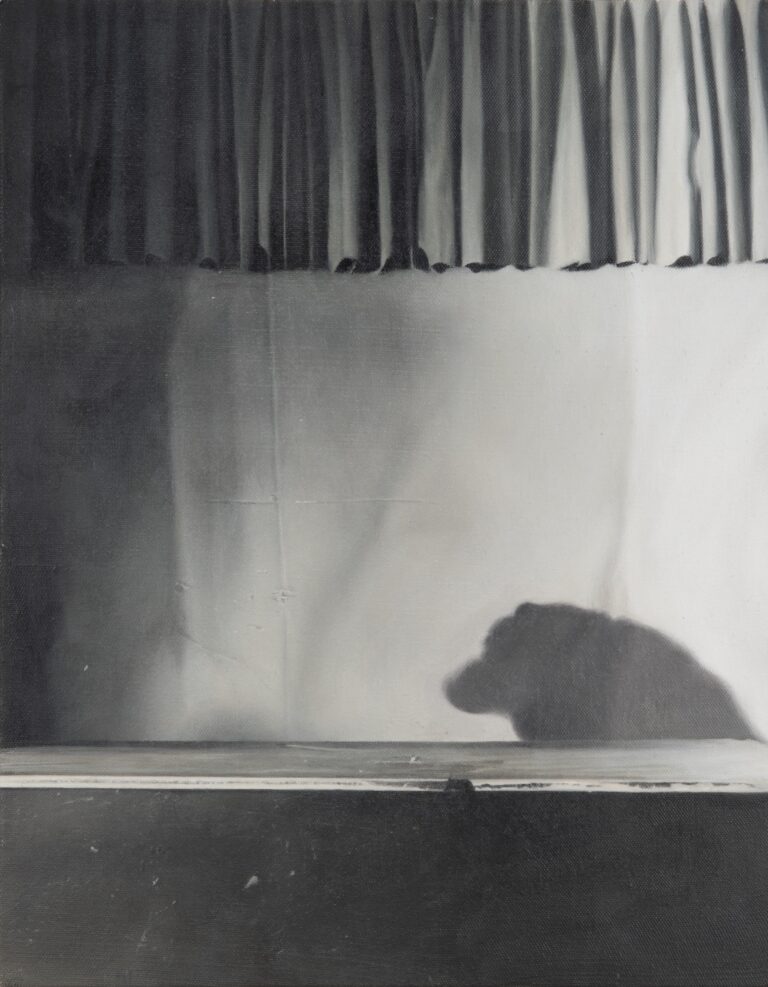
Mario García Torres,
Floodlight Cameo (Cheems), n.d.
© Mario García Torres.
Courtesy the artist and neugerriemschneider, Berlin.
Photo: Omar Bocanegra, Mexico City
oil and wax on canvas
45 x 35.5 cm
Post-revolutionary Mexico stands at the foundation of Nada me han enseñado los años, setting the scene for the narrative that García Torres unfolds within it. This period’s search for a new national identity, bolstered by those who had come to power after a decade of conflict, saw intellectuals – painters, photographers, playwrights and philosophers – work to define their country’s past and to envision its future. A selection of these figures, many of whom were avant-gardists and critics with fraught relationships to Mexican society, feature in and lay the groundwork for García Torres’ series of images. Iterations of archival documents and their fictionalizations entwine to describe a constructed history, becoming integral parts of the artist’s career-long search for and engagement with artistic lineages.
Central to this task are four works (all n.d.), algorithmically drafted before being heavily altered and painted, created around Salvador Novo (1904 – 1974) and Julio Antonio Mella (1903 – 1929). Salvador Novo, whose cutting, rebellious, intentionally provocative prose, poems and plays cemented him as one of the early 20th century’s leading Spanish-language thinkers, is seen in a surreal fivefold portrait – itself a take-off on Marcel Duchamp’s own 1917 multiple portrait – its details blurred in painterly, dreamlike flourishes. Positioned around a table, the quintet embodies the many-pronged nature of retrospection so often at the center of García Torres’ investigations. Dramatically lit, and set against broad, curtain-like strokes of black, the image becomes a stage production’s monologue, fanned out to expose its protagonist’s inner negotiations. Julio Antonio Mella, a founding member of the Cuban
Communist Party, fled to Central America in 1926 after years of political activism had led to his persecution and arrest. He made his way to and settled in Mexico City where, less than three years later, he was assassinated at the age of 25 under mysterious circumstances. His partner, Italian photographer and fellow activist Tina Modotti, bore witness that night and came under suspicion. In pursuit of her exoneration, Diego Rivera, noted muralist and personal friend of Mexico’s then-president, organized a recreation of the murder for the authorities, directed by and starring former actress Modotti. In García Torres’ trio of works, the staged event, its setting pictured in varying stages of activation, theatrical reality unravels, leaving precedent for subjective, nonlinear, unresolved histories in its wake.
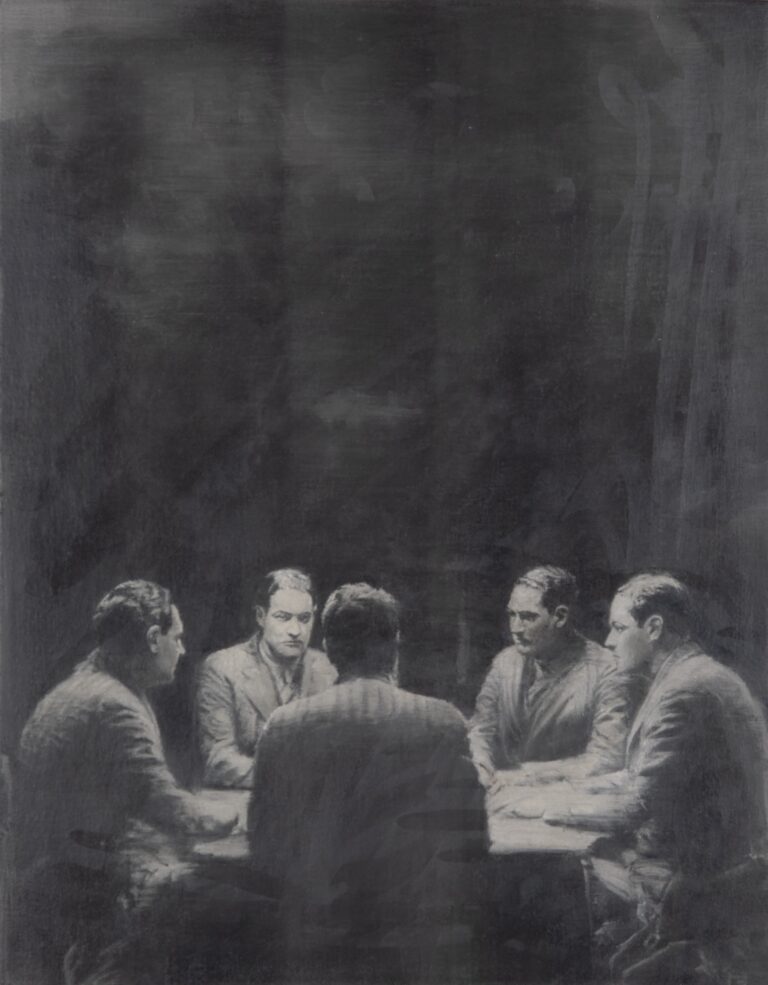
Mario García Torres,
Portrait of a Mischievous Writer and Acute Critic of Early-20th-Century Intellectual Life in Mexico, Who Also Played an Important Role in the Development of Theater of the Era (Salvador Novo), n.d.
© Mario García Torres.
Courtesy the artist and neugerriemschneider, Berlin.
Photo: Omar Bocanegra, Mexico City
oil and wax on canvas
56.5 x 44 cm
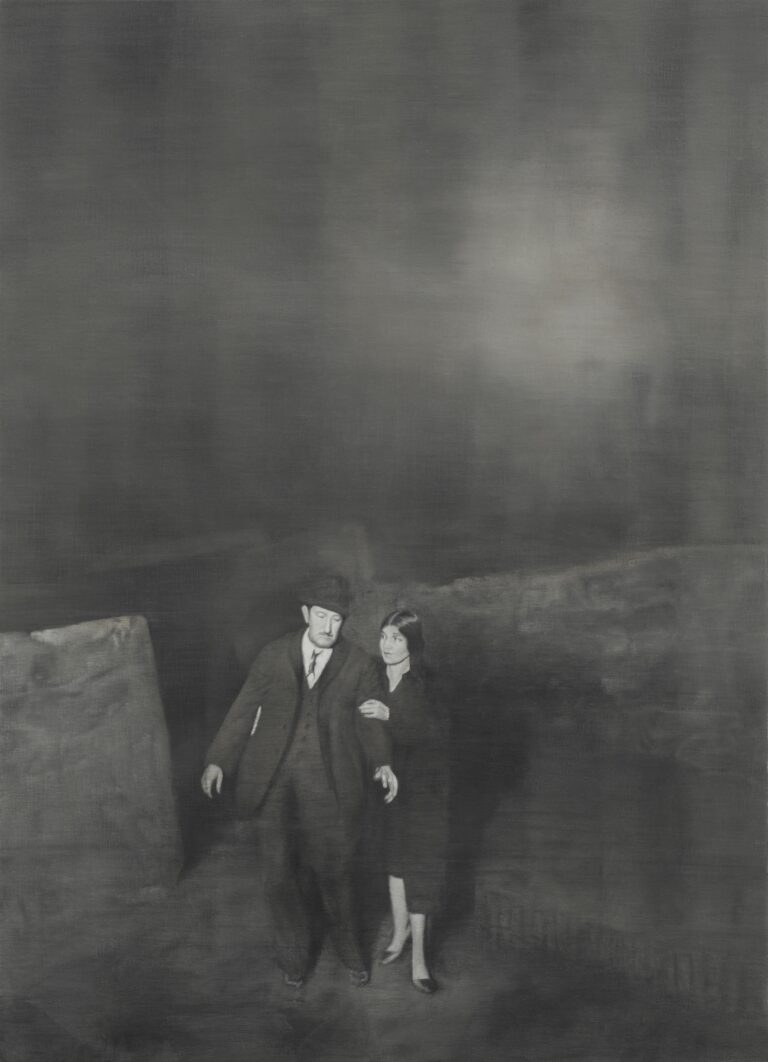
Mario García Torres,
Tina Modotti And an Unknown Actor Recreating The Moment Before The End of Julio Antonio Mella, n.d.
© Mario García Torres.
Courtesy the artist and neugerriemschneider, Berlin.
Photo: Omar Bocanegra, Mexico City
oil and wax on canvas
84.4 x 60.5 cm
Arranged filmically, this project’s suite of works follows a cinematic arc as argumentative, plot-advancing images alternate with those drawn from sources spanning from geological phenomena to quotidian sights and internet culture. García Torres here tells a story of spectacle, reenactment, disappearance and appropriation, fluctuating into the present day, navigating the fallibilities and contingencies of mining the past and, in a self-reflexive operation, cycling back to the complexities of the present.
Mario García Torres (b. 1975) is currently the subject of his first institutional solo exhibition in Germany, A History of Influence at Fridericianum in Kassel until July 27. He has previously been the subject of solo exhibitions at international institutions including MARCO, Monterrey (2021); Museo Jumex, Mexico City (2020); WIELS, Brussels (2019); Walker Art Center, Minneapolis (2018 – 2019); TBA21 Thyssen-Bornemisza Art Contemporary, Vienna (2016); Museo Tamayo, Mexico City (2016); Modern Art Museum of Fort Worth, Fort Worth (2015); Pérez Art Museum Miami, Miami (2014); Hammer Museum, Los Angeles (2014); Museo Nacional Centro de Arte Reina Sofía, Madrid (2010); Kunsthalle Zürich, Zurich (2008); and Stedelijk Museum, Amsterdam (2007). He participated in Desert X, Desert Hot Springs (2023); Sharjah Biennial 13, Sharjah (2017); Manifesta 11, Zurich (2016); the 8th Berlin Biennale for Contemporary Art, Berlin (2014); dOCUMENTA (13), Kassel (2012); the 29th São Paulo Biennial, São Paulo (2010); the 7th Taipei Biennial, Taipei (2010); Yokohama Triennale 2008, Yokohama (2008); and the 52nd Venice Biennale, Venice (2007). He lives and works in Mexico City.
